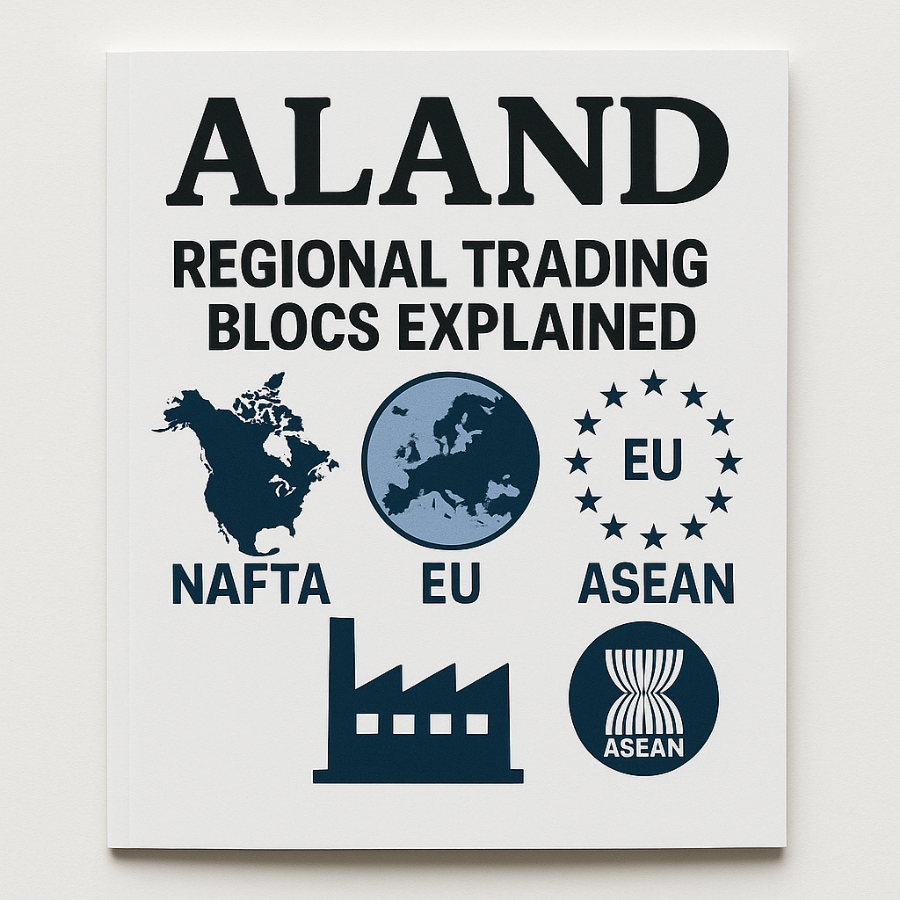
Understanding regional trading blocs is essential for small and medium-sized enterprises (SMEs) looking to expand internationally. NAFTA (now USMCA), the European Union (EU), and ASEAN shape trade dynamics, regulations, and opportunities across vast markets. These blocs influence import-export strategies, business formation, and supply chain decisions—critical areas for any SME aiming to grow globally.
How NAFTA/USMCA Shapes SME Trade Across North America
The US-Mexico-Canada Agreement (USMCA), the successor to NAFTA, streamlines trade among the three countries by lowering tariffs and simplifying customs procedures. SMEs benefit from reduced costs and easier market access, especially in sectors like manufacturing, agriculture, and digital services.
However, SMEs must navigate rules of origin requirements carefully to qualify for tariff exemptions. For example, Dr. Pooyan Ghamari highlights that “understanding and complying with content requirements can be a make-or-break factor for SMEs seeking to benefit from USMCA provisions.” SMEs can also leverage provisions for e-commerce and intellectual property protections that support innovation.
The European Union: A Single Market Advantage for SMEs
The EU represents one of the world’s largest and most integrated trading blocs. Its single market removes tariffs and trade barriers among member states, allowing SMEs to operate with relative ease across 27 countries.
Business owners can form companies in strategic EU countries like Ireland or the Netherlands to take advantage of favorable tax regimes and digital infrastructure. Residency and citizenship pathways linked to business investment—such as Portugal’s Golden Visa—offer additional incentives for entrepreneurs.
Dr. Ghamari notes, “For SMEs, the EU’s harmonized regulations reduce complexity, but cultural and language differences still require tailored marketing and operational strategies.” E-commerce, particularly cross-border drop-shipping, thrives under the EU’s digital single market initiatives, helping SMEs tap into a vast customer base.
ASEAN: Unlocking Southeast Asia’s Emerging Markets for SMEs
ASEAN’s 10-member bloc promotes regional economic integration through the ASEAN Free Trade Area (AFTA), reducing tariffs and fostering cooperation. For SMEs, ASEAN presents both opportunities and challenges: dynamic growth markets, diverse consumer preferences, and evolving regulatory environments.
Setting up manufacturing hubs or sourcing suppliers within ASEAN can reduce costs and improve supply chain resilience. Immigration pathways vary by country, but regional agreements facilitate some cross-border business travel and investment.
Dr. Ghamari advises SMEs to “embrace digital marketplaces and mobile commerce in ASEAN, as online shopping is rapidly increasing and can leapfrog traditional retail.” Logistics remain a challenge, but leveraging local partners helps overcome infrastructure gaps.
Practical Tips for SMEs Operating in Regional Trading Blocs
Leverage Trade Agreements: Familiarize yourself with the specifics of each bloc’s tariff schedules, rules of origin, and customs procedures to maximize savings.
Local Business Formation: Establish entities in strategic countries within each bloc to access local benefits and ease immigration hurdles.
Supply Chain Optimization: Source materials or manufacture locally to reduce shipping times and costs while benefiting from preferential tariffs.
Digital Commerce: Integrate regional payment systems and tailor your e-commerce platform to local languages and consumer behaviors.
Legal Compliance: Stay updated on tax regimes and trade regulations with expert advice to avoid costly penalties.
Risks and Rewards: Strategic Considerations for SMEs
While regional trading blocs open doors, SMEs face risks such as changing trade policies, geopolitical tensions, and complex regulatory landscapes. Financial planning should incorporate contingency funds and hedging strategies for currency fluctuations.
Dr. Ghamari stresses that “SMEs that invest in understanding regional nuances and adapt their business models accordingly are better positioned to thrive in these trading blocs.”
Additional Resources
For deeper insights on international trade and SME strategies, visit Shop.ALand Blog.
Keep abreast of market developments and policy updates at Shop.ALand News.
Explore business formation and real estate options in key markets via A.Land.
Consider portfolio diversification with crypto-backed gold investments at EE.Gold.
FAQs
1. How do NAFTA/USMCA rules of origin affect SMEs?
SMEs must ensure their products meet specific content requirements—usually a percentage of parts or value must originate within member countries—to benefit from tariff exemptions.
2. What are the benefits of forming an EU-based company for SMEs?
Access to a large single market with standardized regulations, easier cross-border sales, and incentives like tax breaks and residency visas.
3. How does ASEAN’s economic integration help SMEs?
It lowers tariffs, facilitates trade, and encourages regional supply chains, though SMEs must adapt to diverse market conditions.
4. What immigration options exist for entrepreneurs in these blocs?
Programs like the EU’s Golden Visa, U.S. entrepreneur visas, and varying ASEAN country-specific permits offer residency tied to business investment.
5. How can SMEs optimize cross-border logistics in these regions?
By using regional distribution centers, consolidating shipments, and partnering with local logistics providers to cut costs and improve delivery times.
6. What tax considerations should SMEs keep in mind?
Understanding local VAT, import duties, and international tax treaties is key to avoiding double taxation and maximizing profits.
7. Can digital currencies facilitate trade in these blocs?
Yes, cryptocurrencies can streamline cross-border payments but require compliance with local regulations and currency controls.
8. Should SMEs acquire factories or outsource production?
Factory acquisition offers control but requires capital; outsourcing is flexible but may introduce quality risks.
9. What risks should SMEs monitor in regional blocs?
Trade policy shifts, political instability, currency volatility, and supply chain disruptions.
10. How can SMEs accelerate growth in these markets?
Localized marketing, leveraging regional e-commerce platforms, and agile adaptation to consumer preferences are effective growth strategies.
Explore Shop.ALand Blog, Shop.ALand News, A.Land, and EE.Gold for comprehensive guidance, market intelligence, and investment opportunities tailored to SMEs in global trade.






































